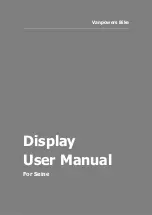
MY20H06-2_1.0_26.08.2019
38
Assembly
Check the position and clamping force of the
quick release lever. The quick release lever
must be flush with the lower housing. You must
be able to see a slight impression on the palm
of your hand when you close the quick release
lever.
Figure 34: Perfect position for the clamping lever
Use a 4 mm hexagon socket spanner to adjust
the clamping lever clamping force if required.
Afterwards, check the quick release lever
position and clamping force.
Figure 35: Adjusting the quick release clamping force
5.3.3
Installing the wheel with a quick
release
Before installing, ensure that the quick release
flange is extended. Open the lever completely.
Figure 36: Open and closed flange
Crash caused by unfastened quick
release
A faulty or incorrectly installed quick release may
become caught in the brake disc and block the
wheel. This will cause a crash.
Never fit a defective quick release.
Crash caused by faulty or incorrectly
installed quick release
The brake disc becomes very hot during
operation. Parts of the quick release may become
damaged as a result. The quick release comes
loose. This will cause a crash with injuries.
The front wheel quick release lever and the
brake disc must be situated on opposite sides.
Crash caused by incorrectly set clamping
force
Excessively high clamping force will damage the
quick release and cause it to lose its function.
Insufficient clamping force will cause a
detrimental transmission of force. The
suspension fork or the quick release may break.
This will cause a crash with injuries.
Never fasten a quick release using a tool (e.g.
hammer or pliers).
Only use the clamping lever with the specified
set clamping force.
CAUTION
!
















































